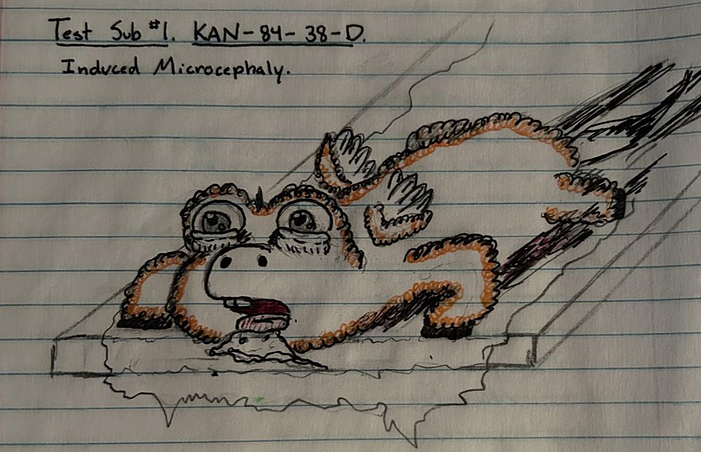DEPT. OF INTERNAL RECORDS CLASSIFIED DOCUMENT.
DO NOT DISTRIBUTE.
DATE: 11.1.20.
LAB: W-1128.
SUBJECT: KAN-84-38-D “Canny”.
STATED PURPOSE: PROJECT NOREACH , ASSISTING IN THE DEVELOPMENT OF TAINTED FLUFFIES.
TO: ALL MEMBERS OF THIRD FLOOR LABORATORIES
FROM: DR. KULMAM, E.
This will be brief.
I begin this document with this simple statement: “the ends justify the means”. In the case of our project, this applies fully. The images that may be shown are graphic, but necessary for the fluffy threat. The epicenter of fluffy contamination began in New York, with many young children wanting these “cute” creatures in their homes. As their programmed behavior became too much for families to handle, the ex-family pets had to subsist on nature. Some did; many, many did not. However, within the past six months, fluffy herds have remained largely the same. Every fluffy has the same body proportions, the only differences being the slight dimorphism represented in males, and the special cases of proto-wings and keratin horns. The only methods of getting rid of these infantile hordes are starvation, infighting, and extermination. Starvation is not possible due to the season. Infighting is also impossible due to the size of the herd. Extermination is “too mean” for the higher ups in their marble buildings. So; OPERATION NOREACH begins to alleviate the stresses put on mankind from these pastel atrocities.
The first subject, completed by myself, is KAN-84-38-D, designated “Canny”. Fluffies already have an almost infant-like intelligence level, as expressed in the FICG gene, reduced by Hasbio scientists incredibly well. Altering a fluffy embryo to completely remove the FICG gene will slow brain growth. Previous to this test, the extent of the stunted growth was unknown. Canny’s mother was also altered. Through previous tests in the East Laboratories, the mare developed a lab-induced genetic condition known as Phenylketonuria (PKU), not allowing her to break down any amino acids from fluffy food. These include, but are not limited to; spaghetti, sugar, and milk from the teat of the mother.
Canny was born on 10.31.2022, with no FICG genes, from a mother with PKU.
The results are captured here.
As we can clearly see, the young fluffy has retained all “fluffy” qualities, but has not developed a fused cranium, solid spinal column, or ears. In this case, I have created “induced microcephaly” in the fluffy species.
My conclusion, as you have probably already figured out:
- Develop mares within the West Laboratories with PKU. They will have decreased intelligence and brain size, but they will be able to survive.
- Develop mares within the West Laboratories that do not transmit FICG to their offspring, or trace amounts of the gene.
- Feral stallions will decrease mating with less-intelligent “soon-mummahs”. Intelligence of the mare has been linked to rates of fatherhood [see Baker, 2017].
- The decreasing babbeh population from mothers with PKU will have massively increased rates “induced microcephaly”.
- The “Canny’d” offspring cannot survive and reproduce. Within two generations the fluffies will have no breeding partners, only coughing messes of soaked fluff.
Further research is needed into applications of “induced microcephaly” in the wild. We will start Monday.
E. KULMAM.
1-123-867-5309
WESTERN LABORATORY, OFFICE Q-557
